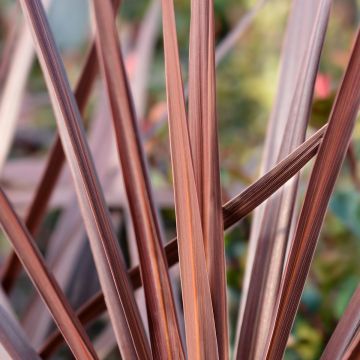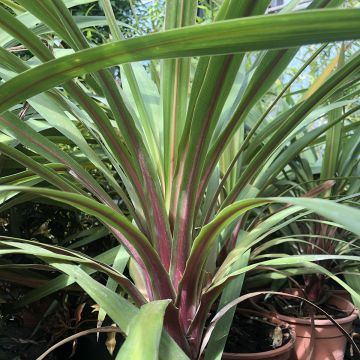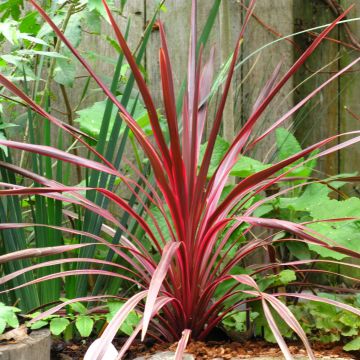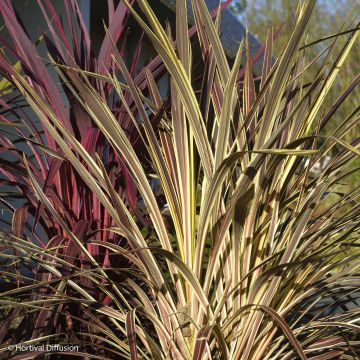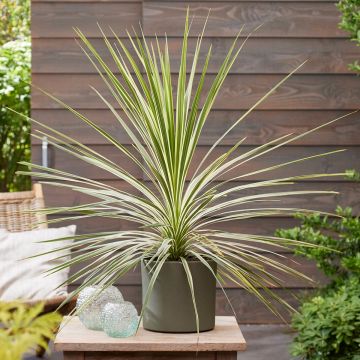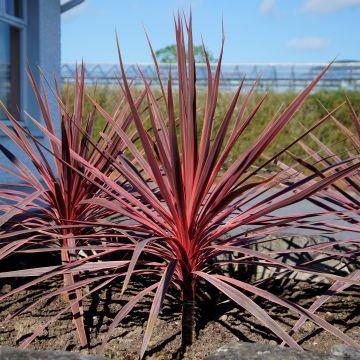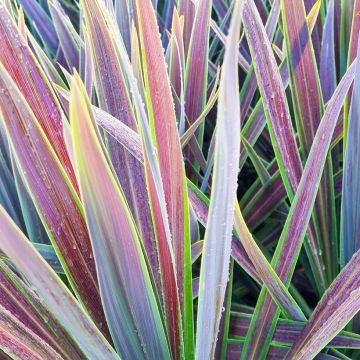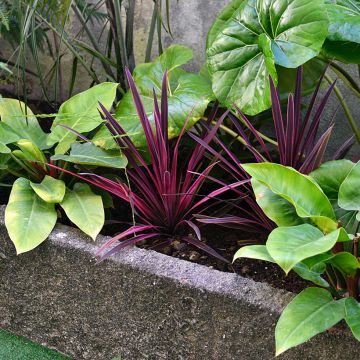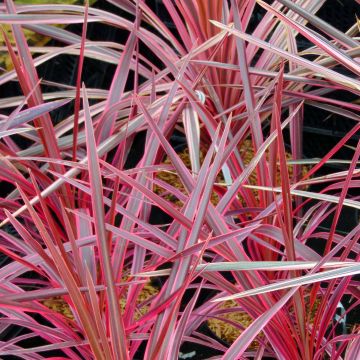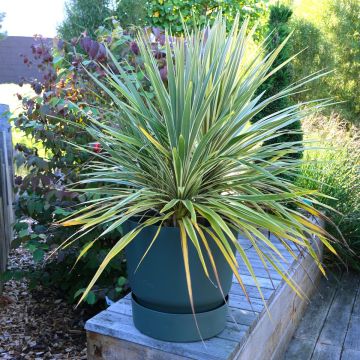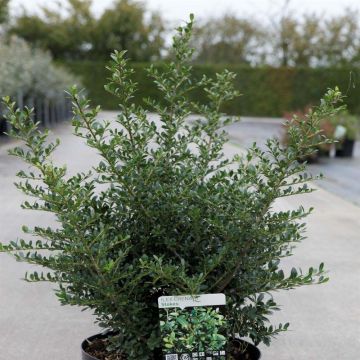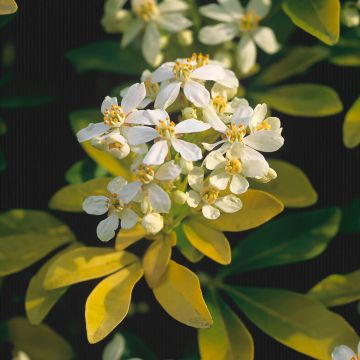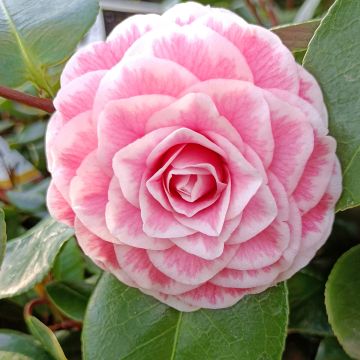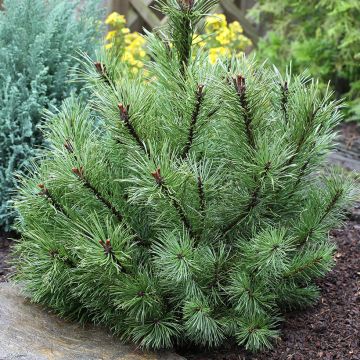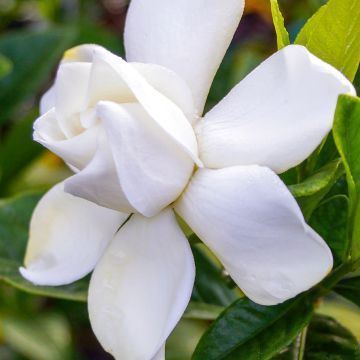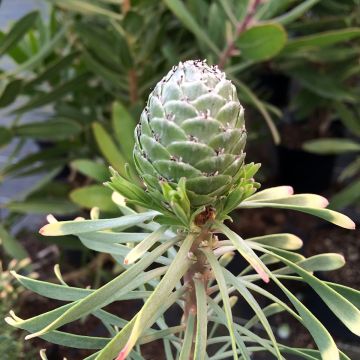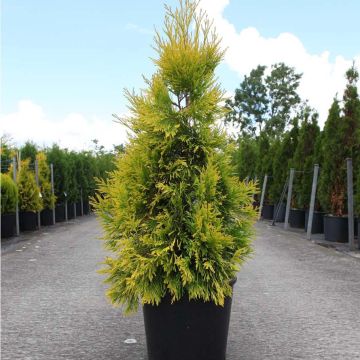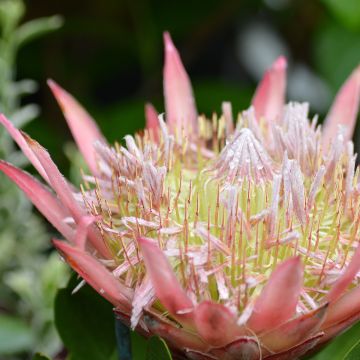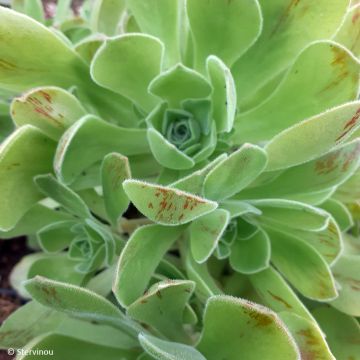

Cordyline australis Design a Line Burgundy


Cordyline australis Design a Line Burgundy
Cordyline australis Design a Line Burgundy
Cordyline australis Design a Line Burgundy®
Cabbage Tree, Cabbage Palm, Torbay Palm
This item cannot be shipped to the selected country
Delivery charge from €5.90
More information
Schedule delivery date,
and select date in basket
This plant carries a 24 months recovery warranty
More information
We guarantee the quality of our plants for a full growing cycle, and will replace at our expense any plant that fails to recover under normal climatic and planting conditions.
From €5.90 for pickup delivery and €6.90 for home delivery
Express home delivery from €8.90.
Does this plant fit my garden?
Set up your Plantfit profile →
Description
Cordyline australis Design a Line Burgundy is a very elegant variety with very thin and long, sword-shaped, reddish-brown to bronze-purple leaves, more intense under the rays of the sun. This large perennial plant with a shrubby habit resembles a small palm tree with long slightly arched leaves. It occasionally blooms in summer, with large fragrant panicles of mauve-lavender flowers that remain decorative for a long time. This magnificent, exotic looking plant benefits from a fairly good hardiness, down to -8/-10°C in well-drained soil.
Cordyline australis is a tree-like perennial plant of the Asparagaceae family, endemic to New Zealand. In the wild, this plant reaches a height of 20 m and forms a robust trunk that branches into numerous leafy heads that can reach 1 m long. The cordyline is found in very diverse habitats, such as forest edges, riverbanks, and open areas, especially near marshes.
The Design a Line Burgundy variety was selected by Malcolm Woolmore at Lyndale Nursery in Whenuapai, New Zealand. It is the result of a cross between Cordyline pumilio and Cordyline banksii. It is compact and slow-growing with remarkably colourful foliage. The plant forms a rosette in its juvenile state (for several years), then it forms a small tree with a single trunk and branches adorned with leafy tufts. This variety will reach 1 to 1.50 m high, with a spread of 1m. Its evergreen leaves are long and narrow, sword-shaped, pointed and slightly arched, 40 to 90 cm long and 3 to 7 cm wide at the base. Flowering occurs in summer on mature plants. Each stem can branch out once it has produced a floral stem. The small lavender-coloured, nectar-rich and delicately scented flowers are borne on large dense panicles measuring 60 to 100 cm long. The fruit is a white round berry measuring 5 to 7 mm in diameter, loved by birds. On mature plants, the pale grey to dark grey bark, with a corky and fissured appearance, is spongy to the touch.
The Design a Line Burgundy Cordyline is hardier than some other varieties and tolerates frost down to -8/-10°C under good growing conditions, i.e. in a warm location, in the sun, sheltered from cold north winds, in well-drained soil. It is resistant to winds that are not icy and sea spray and is well suited to coastal areas. It particularly appreciates Atlantic and Mediterranean climates. Plant it in the centre of a bed, as a small specimen tree, or as a standalone plant. You can also grow it in a pot, especially useful if you want to protect it in winter in a conservatory. In a pot, it will need feeding and watering. It gives an exotic look to the terrace or garden, and its sculptural silhouette pairs well with the King Protea and Dasylirion glaucophyllum to enhance the exoticism, or with Pseudopanax Ferox, bamboos, and giant miscanthus in a garden with modern lines.
Report an error about the product description
Cordyline australis Design a Line Burgundy in pictures


Plant habit
Flowering
Foliage
Botanical data
Cordyline
australis
Design a Line Burgundy®
Asparagaceae
Cabbage Tree, Cabbage Palm, Torbay Palm
Cultivar or hybrid
Other Cordyline
Planting and care
Cordyline australis Design a Line Burgundy thrives in the sun in moist and well-drained soil. It can withstand winds and sea spray, but needs shelter from cold north winds. It likes high summer temperatures but dislikes waterlogged soils. When planting in spring, add some sand. In winter, protect the top of the bush with a winter cover. Cordyline does not require any specific pruning, just remove dried leaves and faded flowers. Only water in case of drought. It has few enemies. It grows well in a large pot, even indoors if the room is very bright and not too heated.
Planting period
Intended location
Care
This item has not been reviewed yet - be the first to leave a review about it.
Evergreen shrubs
Haven't found what you were looking for?
Hardiness is the lowest winter temperature a plant can endure without suffering serious damage or even dying. However, hardiness is affected by location (a sheltered area, such as a patio), protection (winter cover) and soil type (hardiness is improved by well-drained soil).

Photo Sharing Terms & Conditions
In order to encourage gardeners to interact and share their experiences, Promesse de fleurs offers various media enabling content to be uploaded onto its Site - in particular via the ‘Photo sharing’ module.
The User agrees to refrain from:
- Posting any content that is illegal, prejudicial, insulting, racist, inciteful to hatred, revisionist, contrary to public decency, that infringes on privacy or on the privacy rights of third parties, in particular the publicity rights of persons and goods, intellectual property rights, or the right to privacy.
- Submitting content on behalf of a third party;
- Impersonate the identity of a third party and/or publish any personal information about a third party;
In general, the User undertakes to refrain from any unethical behaviour.
All Content (in particular text, comments, files, images, photos, videos, creative works, etc.), which may be subject to property or intellectual property rights, image or other private rights, shall remain the property of the User, subject to the limited rights granted by the terms of the licence granted by Promesse de fleurs as stated below. Users are at liberty to publish or not to publish such Content on the Site, notably via the ‘Photo Sharing’ facility, and accept that this Content shall be made public and freely accessible, notably on the Internet.
Users further acknowledge, undertake to have ,and guarantee that they hold all necessary rights and permissions to publish such material on the Site, in particular with regard to the legislation in force pertaining to any privacy, property, intellectual property, image, or contractual rights, or rights of any other nature. By publishing such Content on the Site, Users acknowledge accepting full liability as publishers of the Content within the meaning of the law, and grant Promesse de fleurs, free of charge, an inclusive, worldwide licence for the said Content for the entire duration of its publication, including all reproduction, representation, up/downloading, displaying, performing, transmission, and storage rights.
Users also grant permission for their name to be linked to the Content and accept that this link may not always be made available.
By engaging in posting material, Users consent to their Content becoming automatically accessible on the Internet, in particular on other sites and/or blogs and/or web pages of the Promesse de fleurs site, including in particular social pages and the Promesse de fleurs catalogue.
Users may secure the removal of entrusted content free of charge by issuing a simple request via our contact form.
The flowering period indicated on our website applies to countries and regions located in USDA zone 8 (France, the United Kingdom, Ireland, the Netherlands, etc.)
It will vary according to where you live:
- In zones 9 to 10 (Italy, Spain, Greece, etc.), flowering will occur about 2 to 4 weeks earlier.
- In zones 6 to 7 (Germany, Poland, Slovenia, and lower mountainous regions), flowering will be delayed by 2 to 3 weeks.
- In zone 5 (Central Europe, Scandinavia), blooming will be delayed by 3 to 5 weeks.
In temperate climates, pruning of spring-flowering shrubs (forsythia, spireas, etc.) should be done just after flowering.
Pruning of summer-flowering shrubs (Indian Lilac, Perovskia, etc.) can be done in winter or spring.
In cold regions as well as with frost-sensitive plants, avoid pruning too early when severe frosts may still occur.
The planting period indicated on our website applies to countries and regions located in USDA zone 8 (France, United Kingdom, Ireland, Netherlands).
It will vary according to where you live:
- In Mediterranean zones (Marseille, Madrid, Milan, etc.), autumn and winter are the best planting periods.
- In continental zones (Strasbourg, Munich, Vienna, etc.), delay planting by 2 to 3 weeks in spring and bring it forward by 2 to 4 weeks in autumn.
- In mountainous regions (the Alps, Pyrenees, Carpathians, etc.), it is best to plant in late spring (May-June) or late summer (August-September).
The harvesting period indicated on our website applies to countries and regions in USDA zone 8 (France, England, Ireland, the Netherlands).
In colder areas (Scandinavia, Poland, Austria...) fruit and vegetable harvests are likely to be delayed by 3-4 weeks.
In warmer areas (Italy, Spain, Greece, etc.), harvesting will probably take place earlier, depending on weather conditions.
The sowing periods indicated on our website apply to countries and regions within USDA Zone 8 (France, UK, Ireland, Netherlands).
In colder areas (Scandinavia, Poland, Austria...), delay any outdoor sowing by 3-4 weeks, or sow under glass.
In warmer climes (Italy, Spain, Greece, etc.), bring outdoor sowing forward by a few weeks.

































